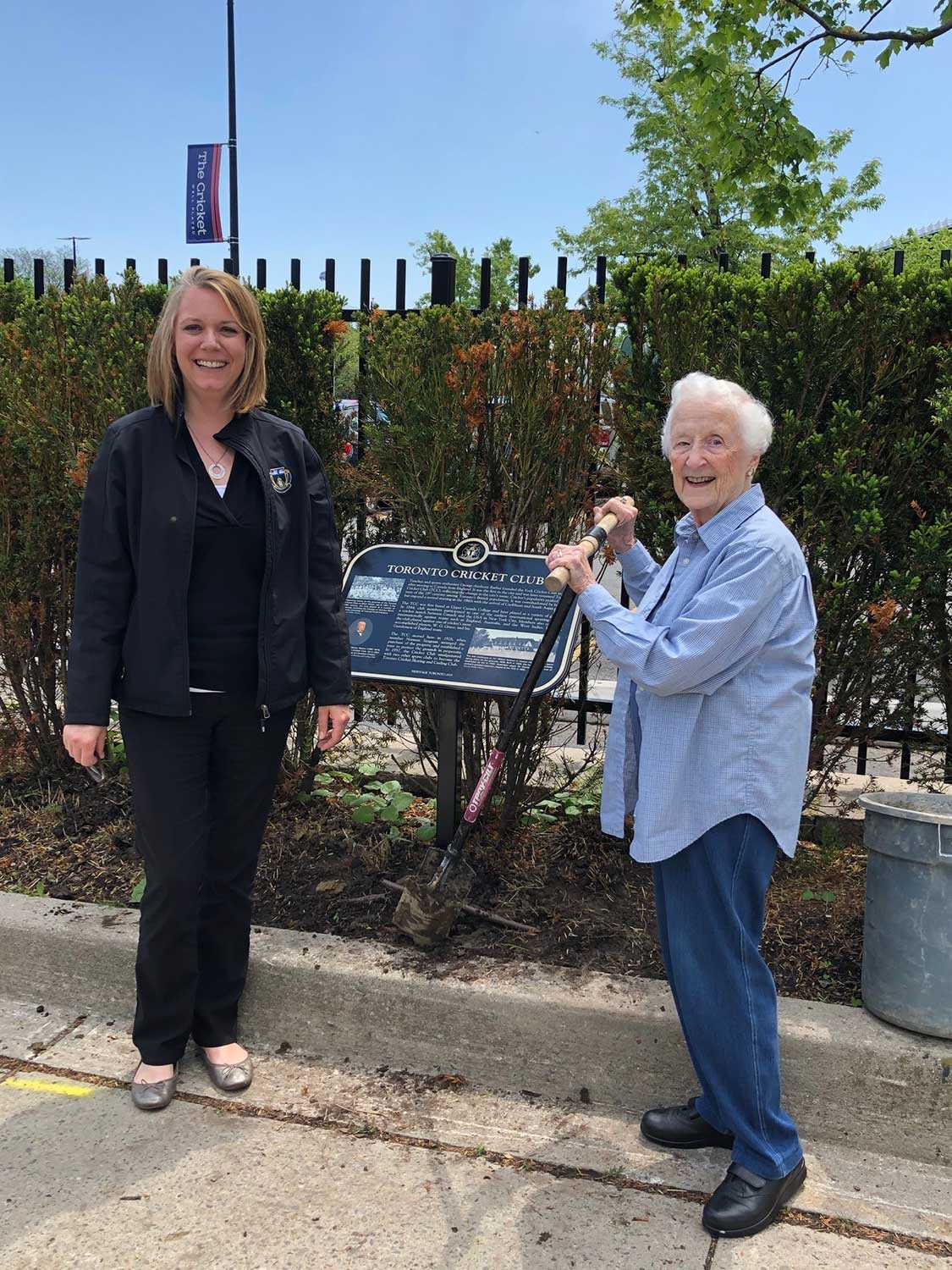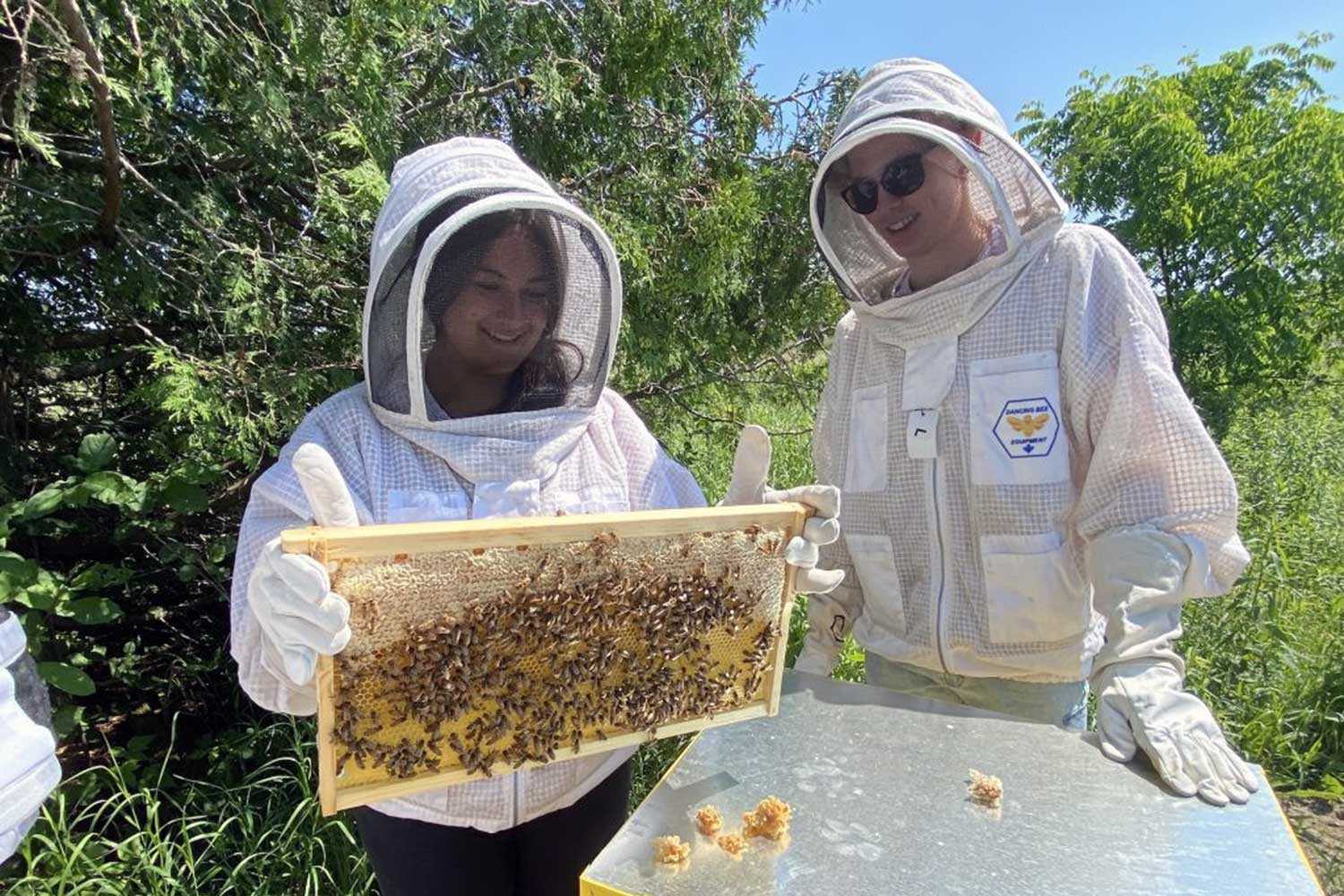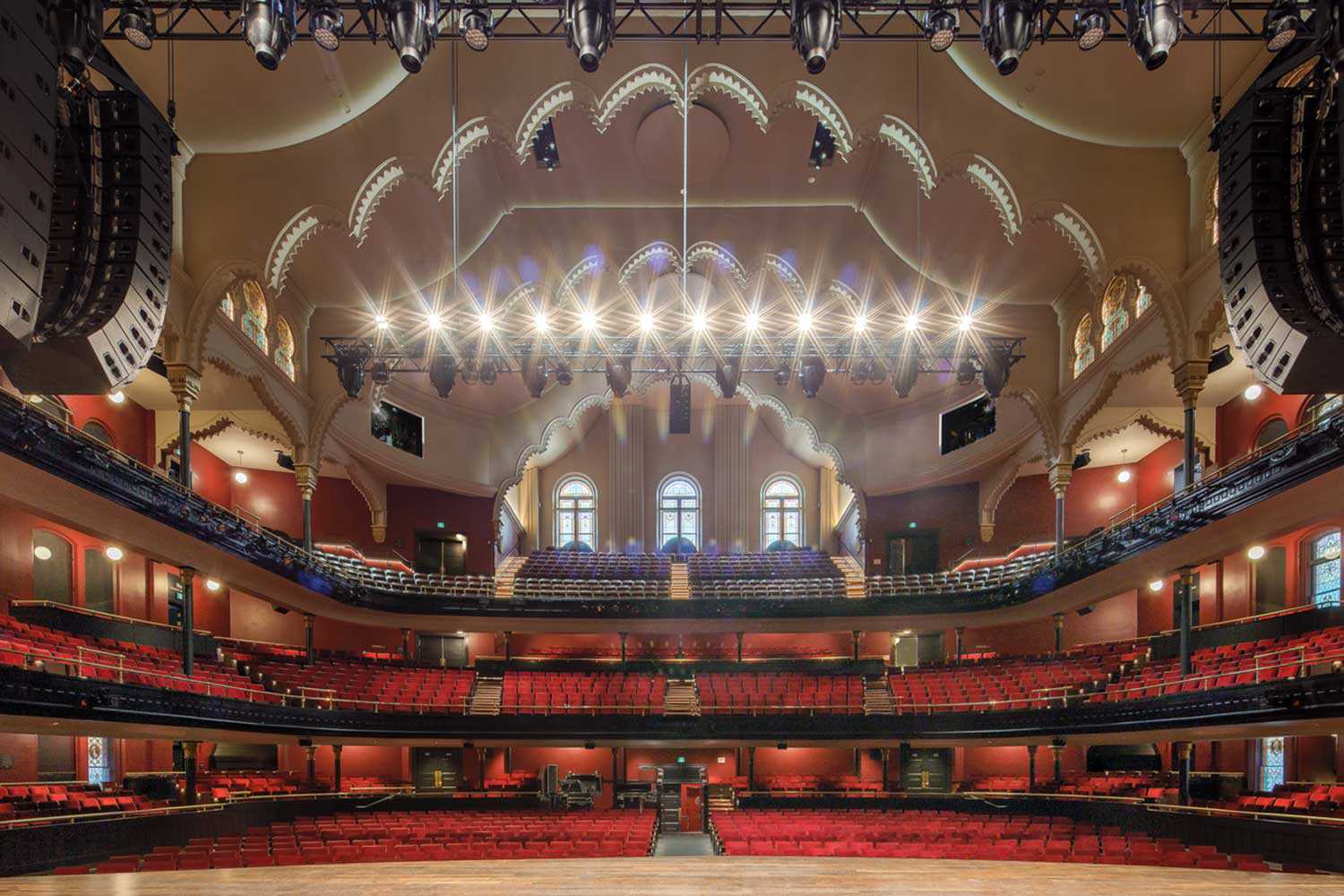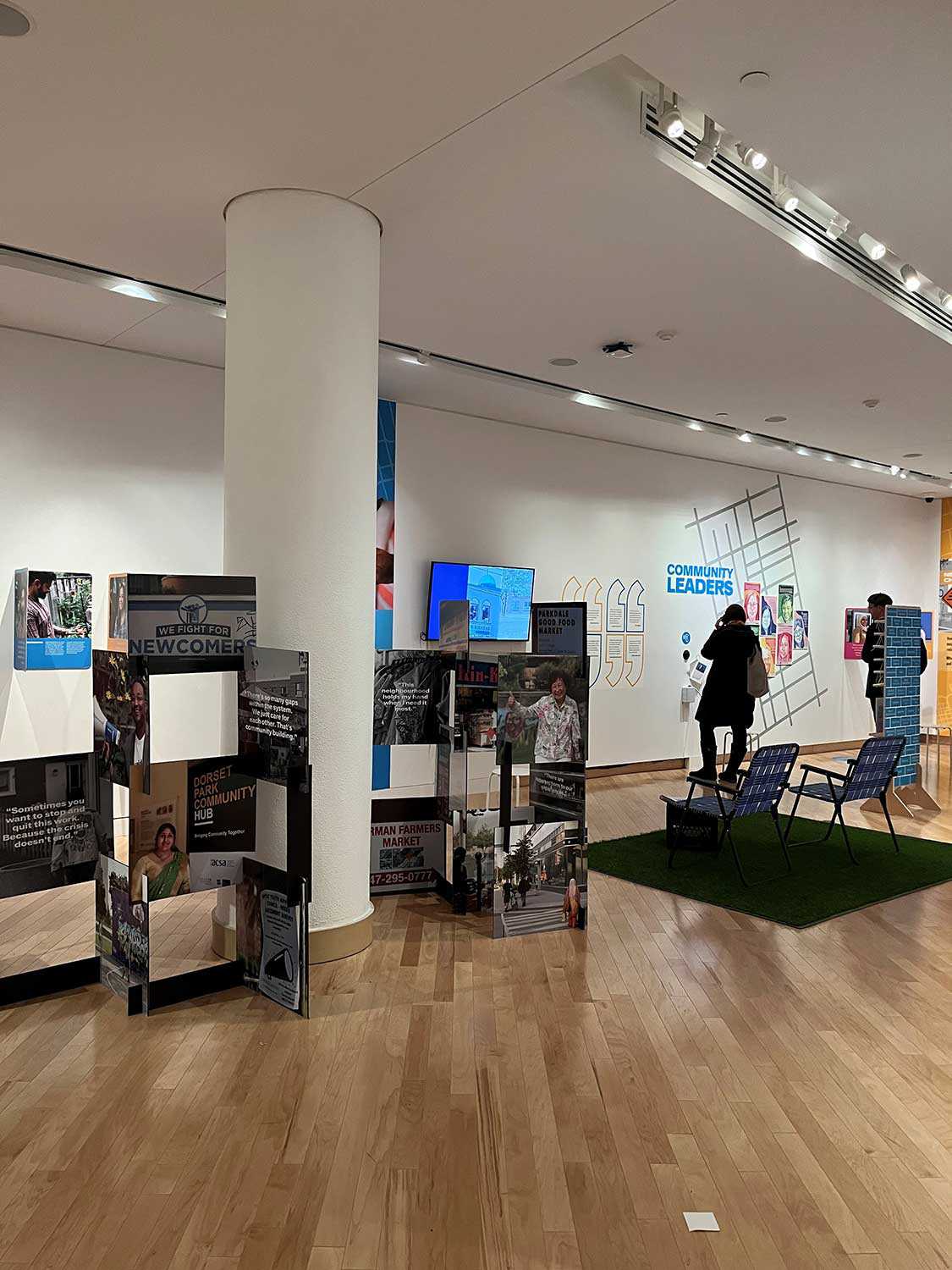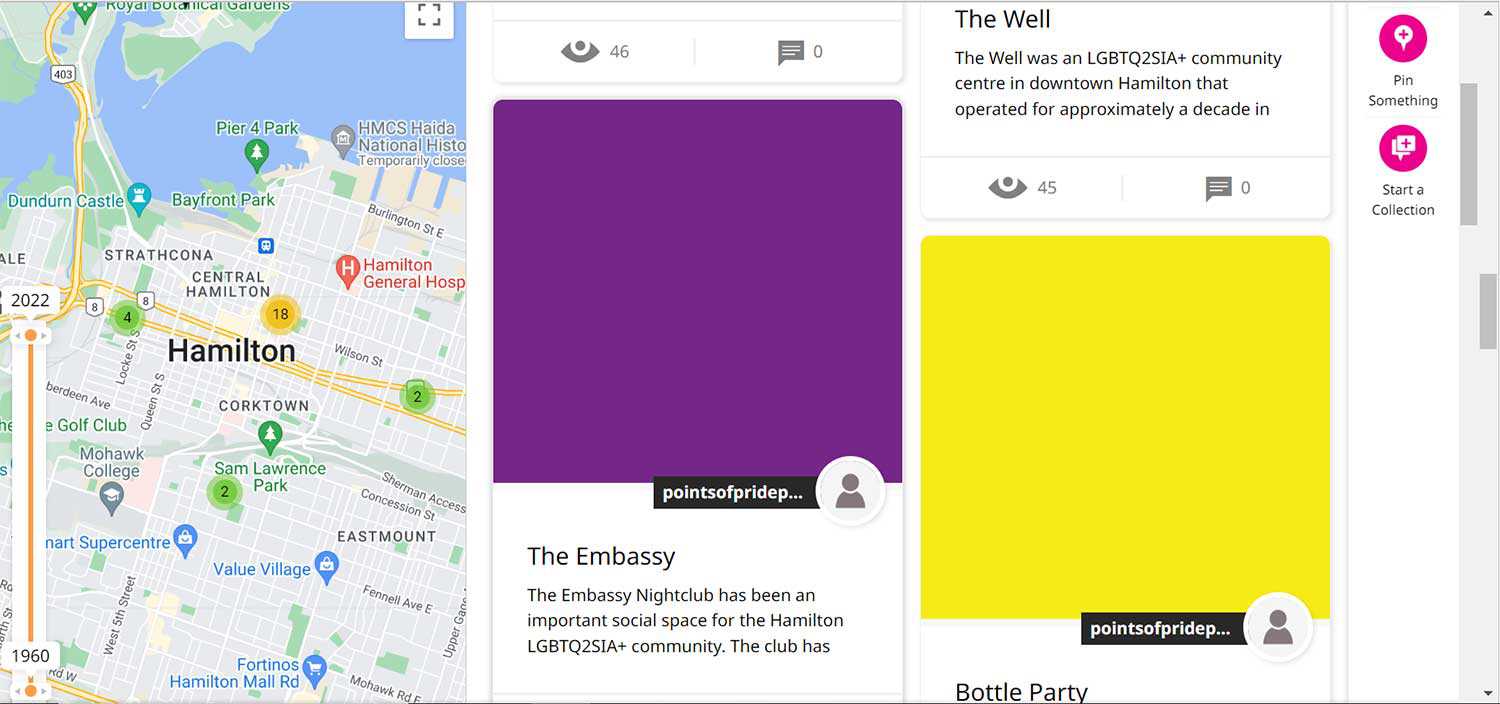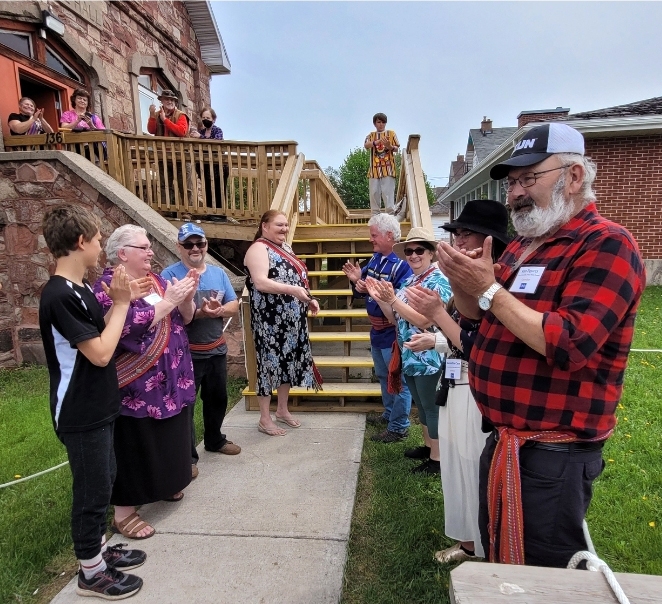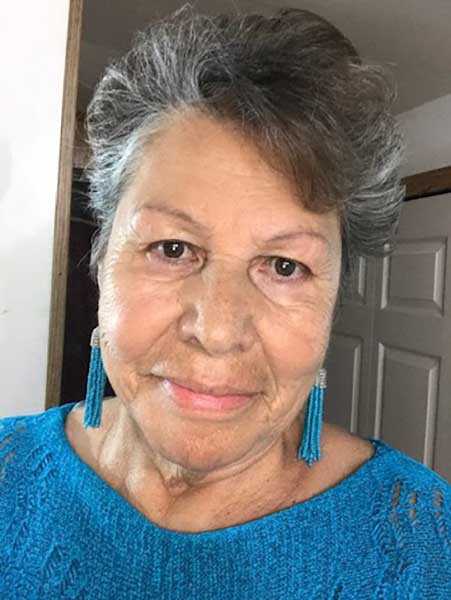Menu
2022 recipients of the Lieutenant Governor's Ontario Heritage Awards
“The Trust is pleased to join the Lieutenant Governor of Ontario in recognizing these outstanding individuals, organizations and communities for their achievements in conservation. They have each demonstrated a passion for their communities and shown the many ways that heritage enriches our lives.” — John Ecker, Chair, Board of Directors, Ontario Heritage Trust
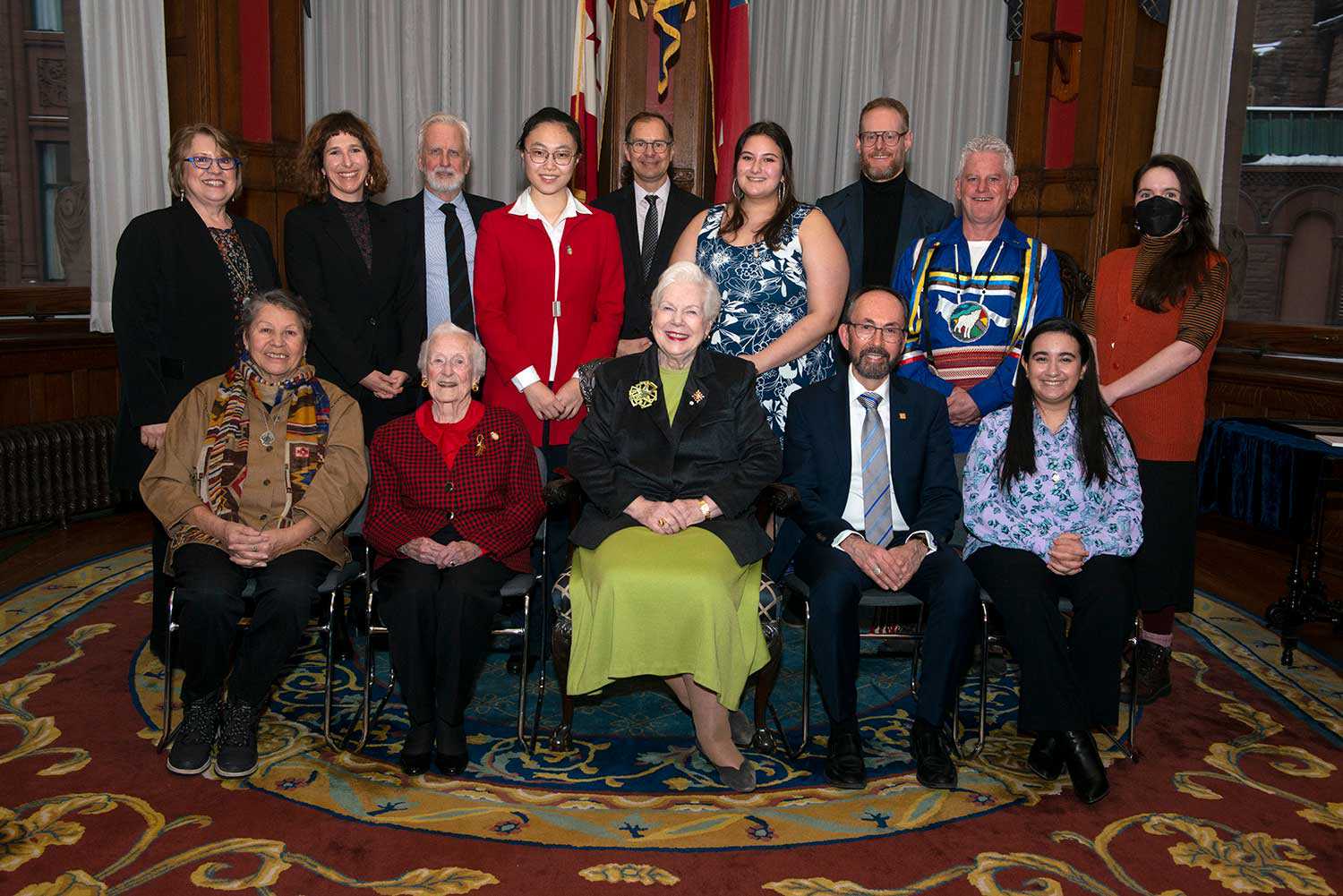
Heritage builds an appreciation for our past and for the objects, stories and places that give Ontarians a sense of belonging in their communities. 2022 was a year of change, but amid all the change that Ontarians experienced last year and over the past few years, our shared need to feel anchored in places and traditions, to feel like we belong, is stronger than ever.
The achievements of the 2022 recipients of the Lieutenant Governor’s Ontario Heritage Awards safeguard traditions, places and stories that give Ontarians meaningful lives and dynamic communities – and enrich their value for future generations. They demonstrate that the activities of heritage conservation protect what we value and do so with an eye towards the future.
We are delighted to introduce you to the 2022 recipients:
Lifetime Achievement:
Youth Achievement:
Excellence in Conservation:
- The Tower Renewal Partnership
- The Massey Hall Revitalization Project
- The Block-by-Block Program
- The Bombardier Centre for Aerospace and Aviation at Centennial College
- The Points of Pride Exhibition
Community Leadership:
Thomas Symons Award for Commitment to Conservation:
Lifetime Achievement
Joyce Hisey
Joyce Hisey has been the epitome of bold action and service to sport heritage. She is a tireless worker and personifies the spirit of volunteerism with her many talents, remarkable memory and expertise. Hisey has worked to preserve history not only with her own actions, but by leading interested parties and key stakeholders to act to ensure that the legacy of sport is conserved. She has inspired like-minded enthusiasts and volunteers to put in the necessary work to document and archive artifacts, and she is a mentor to many through her encouragement of the province’s sporting traditions. Hisey is deeply committed to translating knowledge of the past to the widest possible audience, and to developing sport heritage as a tangible, shared asset that binds us together as Ontarians.
Hisey was instrumental in developing the archives of one of Toronto’s oldest clubs – the Toronto Cricket, Skating and Curling Club. Through her work as a founding member of its heritage committee, she collaborated with experts to develop best practices in records management and archival development, and to preserve and promote the club’s storied history to the public. She is a constant, welcome presence at the Toronto Cricket, Skating and Curling Club, and Skate Canada, and routinely delights her audiences and stakeholders with clever, in-depth and accurate compilations of history and achievements.
For these and her other contributions to the conservation of skating and sports heritage, Hisey has been recognized in the past by the Club by being inducted into the Skating Wall of Fame, made an Honorary Life Member, given the Volunteer of the Year Award and recently being appointed to the Order of Canada.
Youth Achievement
Grace Anyu Sun
Grace Anyu Sun’s leadership of the Youth Committee of the North York Historical Society (NYHS) has influenced more youth to participate in the preservation and promotion of local history. Her talent inspires others and builds community capacity among youth in sharing and promoting heritage and interest in local history. She actively explores youth projects and promotes them to schools, encouraging students to start history clubs. She has designed a website as a communications platform for teens, and her emphasis on innovative methods and techniques has resonated with tens of thousands of local students. She has proposed and worked on a range of youth projects, which include creating documentaries, podcasts and graphic novels for elementary students.
The Youth Committee that she chairs has successfully explored a feasible operation model, which can be replicated and used by other local historical societies. Members of the Youth Committee have come from more than a dozen schools in North York, and their work resonates with local students because of how effectively they have spread their message through new community programs. They have set up clubs in schools, promoted the history of the community, and collected history-related works in schools to facilitate communications and build interest among young people to share and protect heritage through the NYHS Youth Committee website. She also commits much of her time to public, historical preservation projects to build connections with the broader sector – such as developing a historical plaque, assigning a ceremonial street name, and submitting a design for a history-themed postage stamp.
Jocelyn Kuntsi
Jocelyn Kuntsi has transformed conservation practices on her robotics team, in her school and in the community to focus on environmental stewardship in every activity. She is a leader in promoting environmental sustainability and stewardship through building awareness in her broader community, organizing collaborative activities, and building partnerships. This work includes her advocacy to raise awareness around water issues through a 64-km (40-mile) Water Walk, working with M’chigeeng First Nation for shoreline restoration, and participating in bee revitalization. She has also sent sustainable action plans to businesses and event hosts, advocating for reduced carbon footprints. As the Rainbow District School Board Student Trustee, she sits on the Board Strategic Planning Committee and has used her unique position and voice to advocate for issues of conservation and sustainability. On a provincial scale, Kuntsi is the Chair of the Ontario Student Trustees Association Working Group on Environmental Sustainability.
On her evenings and weekends, Kuntsi promotes and participates in community clean-ups and can often be seen along the side of the road in her rubber boots cleaning ditches and shorelines. Most recently, she developed a carbon calculator and shared it with robotics teams globally and hosted a provincial science, technology, engineering, and mathematics (STEM) and sustainability conference.
Kuntsi’s impact on conservation is wide and measurable. In the school and community, she is the face of sustainability, and is helping to inspire a shift in STEM culture to focus on technological innovation and environmental conservation alike.
Sarah Syed
Sarah Syed is an ambitious young advocate for environmental stewardship and social justice, and a passionate advocate for conserving our natural environment. She is distinguished by her public advocacy, skill in public speaking and her founding of new initiatives to engage youth to share their own perspectives in their own voices. She is an advocate for diverse perspectives to be shared at the seats of power. She has volunteered at her masjid and during Ramadan, preserving Islamic culture, and has shared her cultural heritage with her peers. This led her to organize an annual cultural festival at her school – including dance, arts, music and food – open to the surrounding community. Syed also volunteered with EcoAmbassadeur, where she created brochures and an email campaign on the importance of including the voices of Black and Indigenous people and people of colour in the decision-making process.
Syed is a seasoned public speaker and experienced in addressing many audiences to encourage bold action. She has been a prolific volunteer since she was nine, founded her school's environmental club at 15, and is the founder of You Are the Change, an organization that helped youth learn to use those uncomfortable feelings of worry, fear and eco-anxiety as a catalyst for momentum and action to help create the change they wish to see. Her work has impacted thousands of people at home and abroad. She strives to ensure that her impact is not only local within her community but across Ontario, Canada and globally while at the same time inspiring others to act from where they reside.
Excellence in Conservation:
The Tower Renewal Partnership
The Tower Renewal Partnership (TRP) is a non-profit initiative that works through research, advocacy and demonstration to activate community capacity and generate reinvestment to transform mid-century modern residential towers and surrounding neighbourhoods into sustainable, resilient and healthy places. As this housing provides critical homes for those of modest incomes, the partnership seeks to ensure that it is not only preserved but also made resilient into the future. Doing so took over a decade of investigations, partnerships, advocacy and coalition building. Since 2007, ERA Architects has pursued the public policy objective of residential tower renewal through research, advocacy and action. Their work has included:
- starting the Not-for-Profit Tower Renewal Partnership in 2009
- developing a series of policy frameworks for municipal, provincial and federal governments
- engaging in a broad outreach and research program with partners that have included local and international universities, the National Film Board, Toronto Public Health, United Way Greater Toronto, Evergreen, Maytree, The Atmospheric Fund Foodshare, the Federation of Canadian Municipalities, Urban Land Institute, the Canada Mortgage and Housing Corporation, and many others
- demonstrating the potential of tower renewal through award-winning work from the Gordonridge Sportscourt in Scarborough to the Ken Soble Tower in Hamilton, the first passive house-certified residential tower in North America. The latter is particularly significant through engaging in retrofit rather than replacement; the Ken Soble Tower has saved substantial embodied carbon, and maintained existing affordable housing.
These initiatives have influenced a new culture in which the mid-century housing stock is understood as a critical asset and policy priority for municipal, provincial and federal governments – and beyond. International agencies, such as the New York City Housing Authority, are now looking to the success in Ontario and the efforts of the TRP in setting their own policies for resilience and renewal. The Tower Renewal Partnership continues to build industry capacity for decarbonization, ensuring that retrofits enhance well-being, health, safety and sense of place while preserving affordability.
The Massey Hall Revitalization Project
Massey Hall opened its doors in 1894. It has become an iconic symbol of Toronto’s heritage of music, performance and entertainment. For this, it was recognized as a National Historic Site in 1981. By 2014, the building required functional updates to deliver an improved infrastructure that would enhance the functionality of the performance spaces and of the overall audience experience.
The Corporation of Massey Hall and Roy Thomson Hall engaged a team of consultants that were deftly able to balance the needs of modernizing and adding to the historical music hall, while making conservation a high priority. This conservation strategy was based on a thorough understanding of the historical place and a goal of repairing extant heritage elements as opposed to removing or replacing them. Careful thought put towards design and engineering solutions, combined with expert heritage advice, allowed for improved accessibility to the space and patron amenities, enhanced acoustics and updated performance lighting. Close to 100 art nouveau-style stained-glass windows were assessed before the workshops of conservators meticulously restored the windows, including the 12 “composer windows,” which feature the faces of famous composers, lining the walls of the ground floor of the auditorium. The existing 1930s art deco-style lobby was preserved in its entirety. Early 20th-century fire escapes were removed on the front façade to reveal features that had been obscured for decades. Overall, innovative solutions were developed with heritage specialists to guide the project. For example, acoustical plaster was used sparingly in some key areas identified by the acoustician, while the remainder of the plaster ceiling was preserved. Black-out blinds were designed by the architects to allow for the lighting levels required by the theatre consultants, while still allowing for the revealing of the century-old art nouveau-style stained-glass windows.
The successful revitalization of Massey Hall serves as an example for countless other large-scale historical buildings throughout the province that may be threatened because they have been deemed to be outdated or inaccessible. The revitalization of Massey Hall has ensured the viability of this important cultural site for years to come. Not only has the project allowed for countless people to continue to enjoy and appreciate the historical site, but also the construction project itself generated employment for hundreds of people, including dozens of people in the heritage trades – especially welcome employment during the pandemic years.
Project partners:
- GBCA (heritage consultants)
- KPMB (lead architect)
- Corporation of Roy Thomson Hall and Massey Hall (owner)
The Block-by-Block Program
Block-by-Block, the Toronto Ward Museum’s flagship program, is a participatory, multimedia project that engages and empowers young people, newcomers and Indigenous community members in the collection and interpretation of oral histories in immigrant neighbourhoods. It first ran nationally in 2017 and resulted in a print and online exhibition and three public events focused on the historical Ward (Toronto), Côte-des-Neiges (Montreal) and Strathcona (British Columbia).
In 2019, Block by Block was expanded into a multi-year project that focuses on four Toronto neighbourhoods undergoing significant redevelopment and change: Agincourt, Parkdale, Regent Park and Victoria Park. To date, the Ward Museum has hired 45 racialized and newcomer youth citywide and trained them in oral history and co-curation to preserve and animate stories of migration, settlement and community building. Block by Block uses a variety of digital technologies, such as audio recording and digital surveying, to ensure that its materials are accessible, artful and broadly distributed across communities. The project has documented over 100 oral histories, created 12 local exhibitions in the form of block parties, as well as one city-wide exhibition at the Toronto Reference Library.
The exhibition connects the past to present-day priorities amid a rapidly changing urban environment by tying the collection of oral histories to future community building, ensuring that the neighbourhoods and communities featured have the skills and expertise to protect and share their heritage.
The program applies principles of respect and care in their consent and consultation processes, ensuring that its process of heritage conservation is done in partnership with the community and, more importantly, by the community. The program contributes to cultural heritage conservation by empowering immigrant and racialized communities as key stakeholders, preserving the social fabric built by these communities and their networks of community care, which often go unrecognized. The cumulative oral histories collected by the Block-by-Block Program will be important community and cultural assets in future culture, heritage and development plans related to the studied neighbourhoods.
The Bombardier Centre for Aerospace and Aviation at Centennial College
The Bombardier Centre for Aerospace and Aviation at Centennial College preserves a remarkable site in Canadian aviation history. The building, once the centre of aviation manufacturing and design in Canada, was transformed into an innovative learning institution for the college’s Aviation and Engineering Technology and Applied Science programs. The campus contains five buildings built between 1929 and 1944, the first of which was designed by Toronto architects Mathers and Haldenby. Drawing on the site’s rich heritage, Centennial College’s new campus encourages a generation of students to pursue innovation in the aerospace sector.
The overall heritage value of the site has been retained through the conservation and adaptive reuse of the former building, paying special attention to the north façade of the structure, which was completely rehabilitated. Original brick piers on the oldest section of the south elevation dating back to 1937 were retained. A portion of the structure at the east end of the complex was dismantled and carefully rebuilt and re-clad, with the addition of contemporary building components that remain in line with the original function and design of the structure. The existing east hangar was replaced and expanded to accommodate larger, contemporary aircraft. This new hangar remains hidden from view to be harmonious with the original industrial design of the building, keeping the focus on the original heritage building and the addition of public space surrounding the structure. Signs and graphics that reference the building’s historical use throughout play a significant role in rebranding the structure as a home to aviation education, while connecting its current use to its historical one.
The mix of old and new is a unique and special attribute to this project, paying tribute to the building’s original use while maintaining the site's ongoing affiliation with Canadian aviation history through its new, but still historically consistent, vocation.
Project partners:
- MJMA (design architects)
- ERA Architects (heritage architects)
- Stantec
- Centennial College (building owner)
The Points of Pride Exhibition
Realized as a passion project by a group of four friends who grew up and came out together in Hamilton, Points of Pride is an evolving place-based digital resource designed to reveal and celebrate sites of LGBTQ2S+ heritage in Hamilton. Since it was launched in November 2021 in partnership with Hamilton Civic Museums, it has identified and conducted ongoing documentation of 32 LGBTQ2S+ heritage sites in the Hamilton area – with more to come – and begun a growing archive of oral history interviews with LGBTQ2S+ community members. It is a response to a lack of visible and accessible LGBTQ2S+ heritage resources in Hamilton, requiring considerable time and effort dedicated to combing through a limited and delicate pool of sources to assemble its growing collection of heritage sites and oral histories.
The project is a virtual multimedia exhibition that combines visual, audio and spatial components – such as interactive maps, audio interviews and blog posts. The exhibition is intended to incorporate LGBTQ2S+ experiences into Hamilton’s shared past, often previously invisible or actively erased, that intersect across race, class, gender, age and sexuality to make visible the spectrum of queer life in the city across generations and community boundaries. It is intersectional in both its approach and content and brings to the surface many untold and hidden stories. The multi-platform approach results from its collaborative and participatory design, showing diverse creative perspectives and skills alongside knowledge in architecture, planning, anthropology, archaeology, entertainment and history. Through mapping and interviews, it shows a layer of the city's social and cultural history that is not otherwise immediately visible to those outside of its immediate community.
The exhibition is intended to inspire LGBTQ2S+ Hamiltonians to embrace their curiosity about their history, connect with stories that resonate with and challenge them, and help Hamiltonians understand a more fulsome and inclusive story that tells a better, more rounded narrative about the city's heritage.
Community Leadership
Historic Sault Ste. Marie Métis Council for the Sault Ste. Marie Métis Centre
The Historic Sault Ste. Marie Métis Council has transformed three buildings, previously belonging to the Anglican Church of Canada, into a vibrant community centre, providing a home for the Métis community that has been without a place of its own since their lands were taken from them.
In 1850, the Treaty Commissioner promised, on behalf of the Crown, that the Métis lots along the St. Mary’s River would be protected. This promise was never fulfilled and, instead, the government knowingly rolled out a land-purchase system that systemically excluded the Métis. Within 10 years, over 90 per cent of their lands were taken. An Anglican church was built on top of a historical Métis cemetery in 1901 and, in 2017, the land and buildings were returned to the Métis community in an act of "tangible reconciliation" between the community and the Anglican Church. In the five years since the land has been returned to the Métis community, the chapel, hall and rectory (built in 1901, 1919 and 1965 respectively) have been renovated and brought up to current environmental and accessibility standards. The rectory has been converted into a social program and service hub, the hall has been upgraded to serve as a community gathering place, and the chapel has been converted into a first-of-its-kind-in-Ontario Métis cultural centre that will house a museum, archive, recording studio and creative space. This project has saved two heritage buildings from demolition and has provided a home for a people who, for generations, have had their land, homes, culture and dignity taken from them.
The Centre provides a point of access for social programs offered by the Métis Nation of Ontario to improve the quality of life for Métis citizens, as well as a community gathering place to host weddings, funerals, family reunions, workshops and much more. The Cultural Centre component of the site is the first Métis cultural centre in Ontario and one of only four such centres in Canada.
Thomas Symons Award for Commitment to Conservation:
Shirley Horn
Shirley Horn is a survivor of the Shingwauk Residential School, a founder of the Children of Shingwauk Alumni Association, and the first Chancellor of Algoma University. She has dedicated herself to teaching Canadians about the Residential School system and to helping her people reclaim their land and their rights.
Horn is from Chapleau from where, at the age of five, she was sent to St. Johns Indian Residential School. She was then transferred to the Shingwauk Indian Residential School (now the home of Algoma University) at the age of seven, where she remained for six years. In 1981, she helped found the Children of Shingwauk Alumni Association, a constructive organization that has been a leader at the national level on telling the truth about the Canadian Residential School system. She remained in a leadership position with the organization for 34 years.
Horn has been Chief of her own community, the Missanabie Cree First Nation, and has also been a member of the Missanabie Cree Elders’ Council. She has been an advisor to the Reclaiming Shingwauk Hall exhibition project, guided Algoma University’s approach to cross-cultural learning, and advised on numerous research and artistic projects. Horn is also co-founder of the Echoes of the World Drum Festival, and a former member of the Shingwauk Education Trust.
Horn has remained steadfast in her commitment to Algoma University. As a rare graduate of both the Residential School and the university, she received a standing ovation at convocation in 2009. In 2015, she received the Alumni Achievement Award. She is an accomplished artist and her piece, Project of the Heart, is on permanent display outside of the Doc Brown Lounge at Algoma. She became the first Chancellor of Algoma University from 2015-21, where she served as titular head of the institution and helped to raise the profile of the institution and assist with relationship building and fundraising. Her service and dedication to Algoma University are helping the institution to fulfill the true vision of Chief Shingwauk, still in progress, but also occupying space at the literal and symbolic heart of its campus, to realize the cross-cultural education both of settlers as well as Indigenous young people in each other's cultures and ways of knowing.

